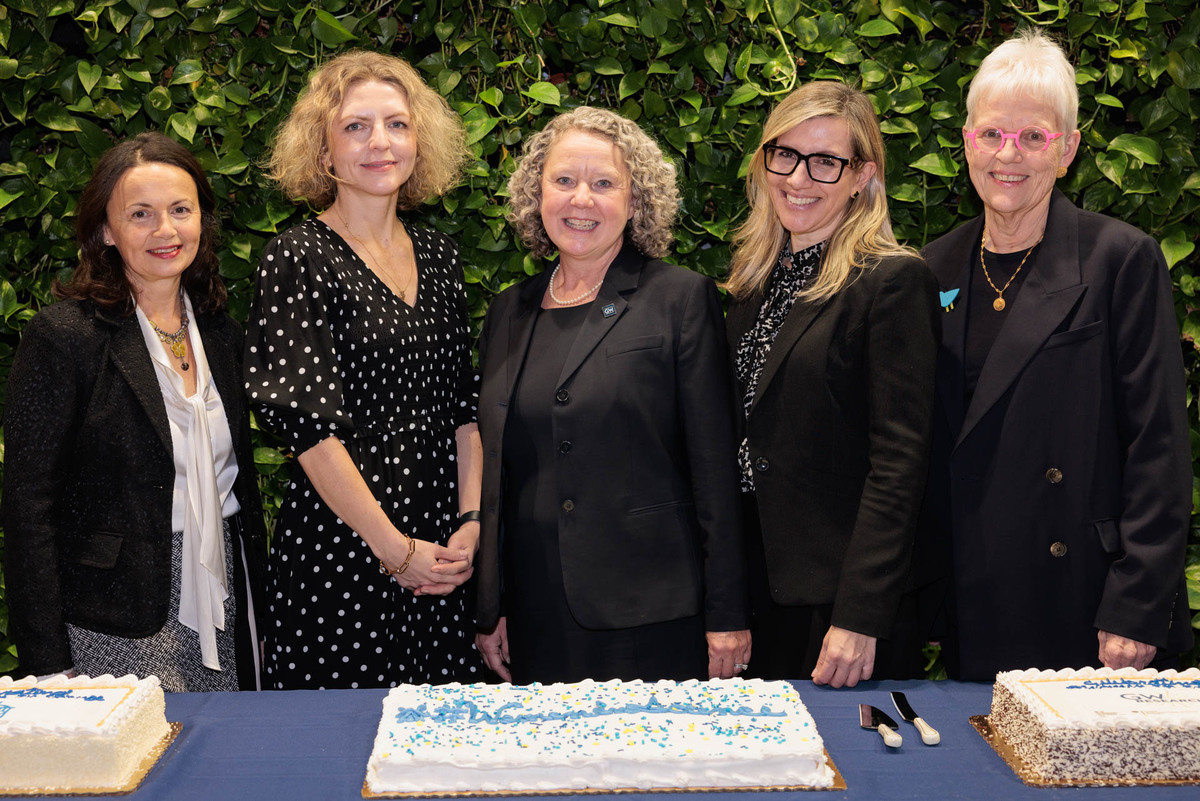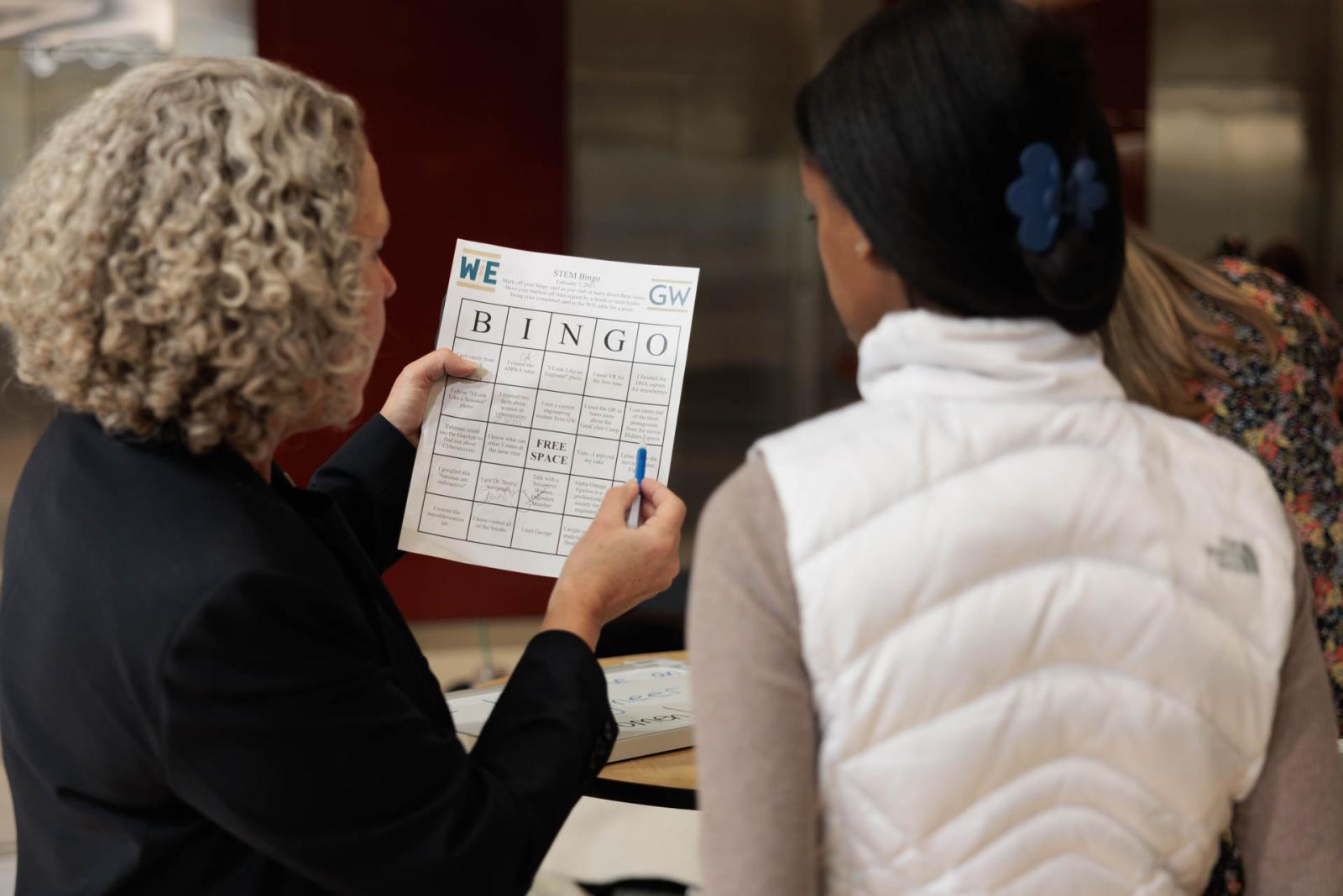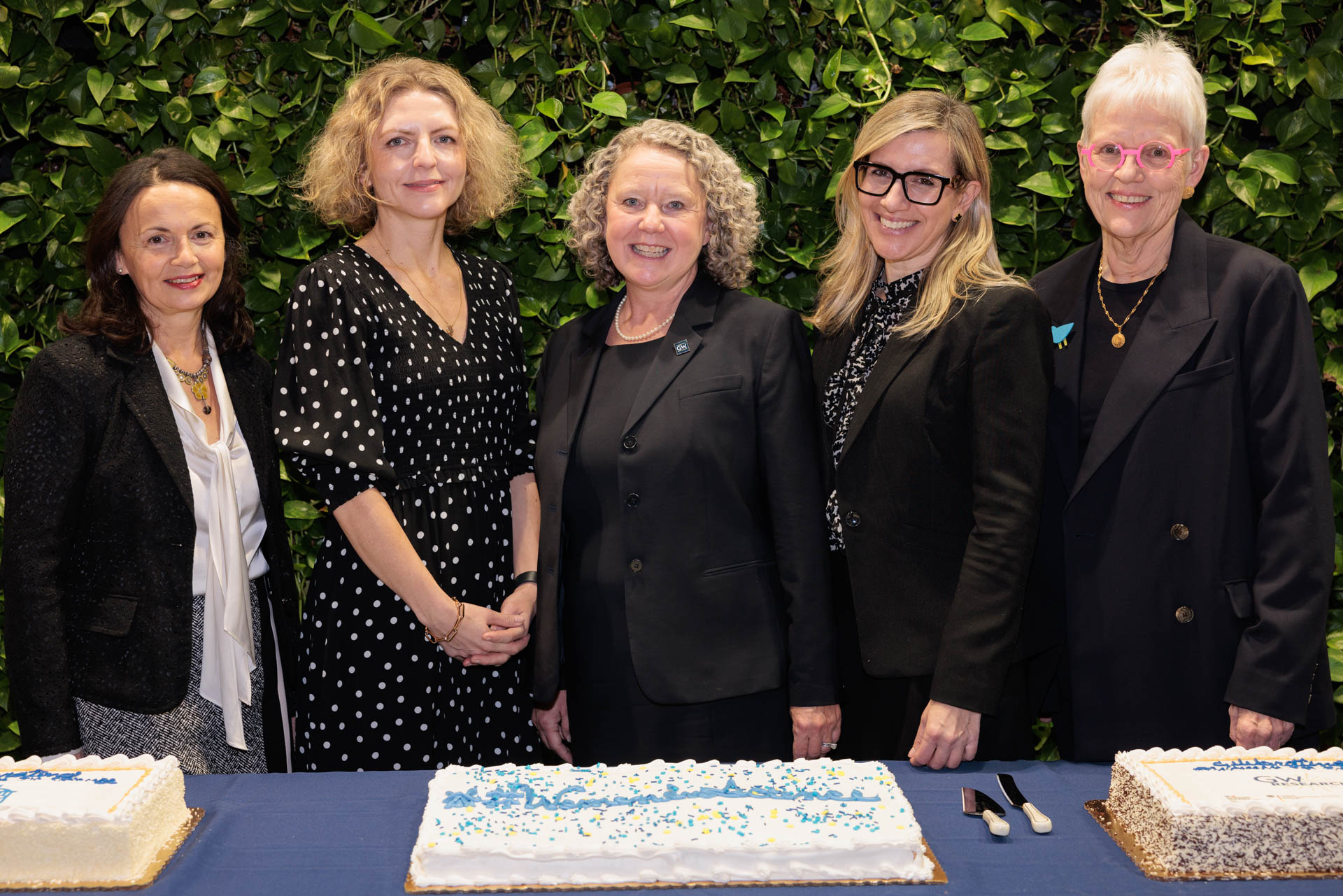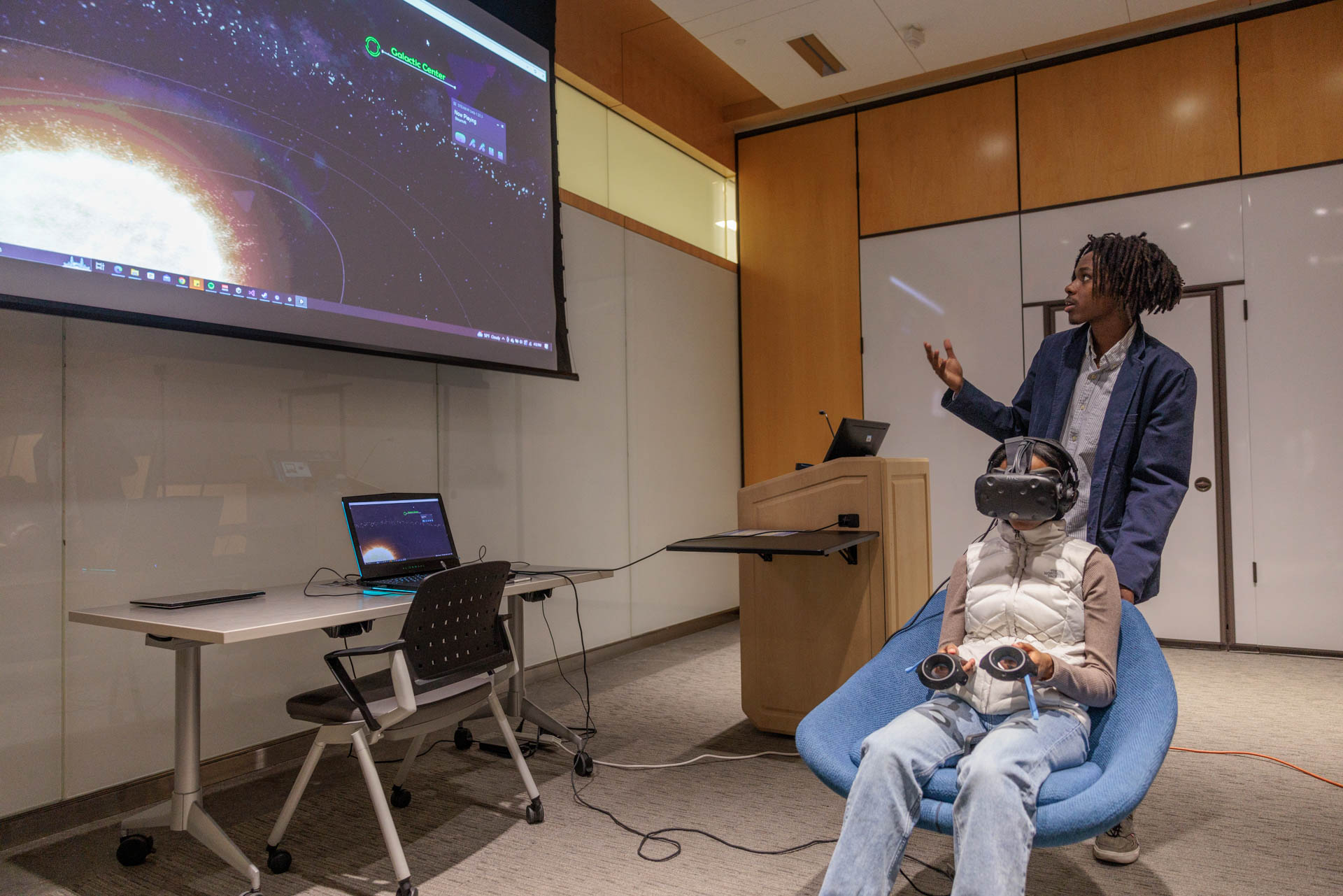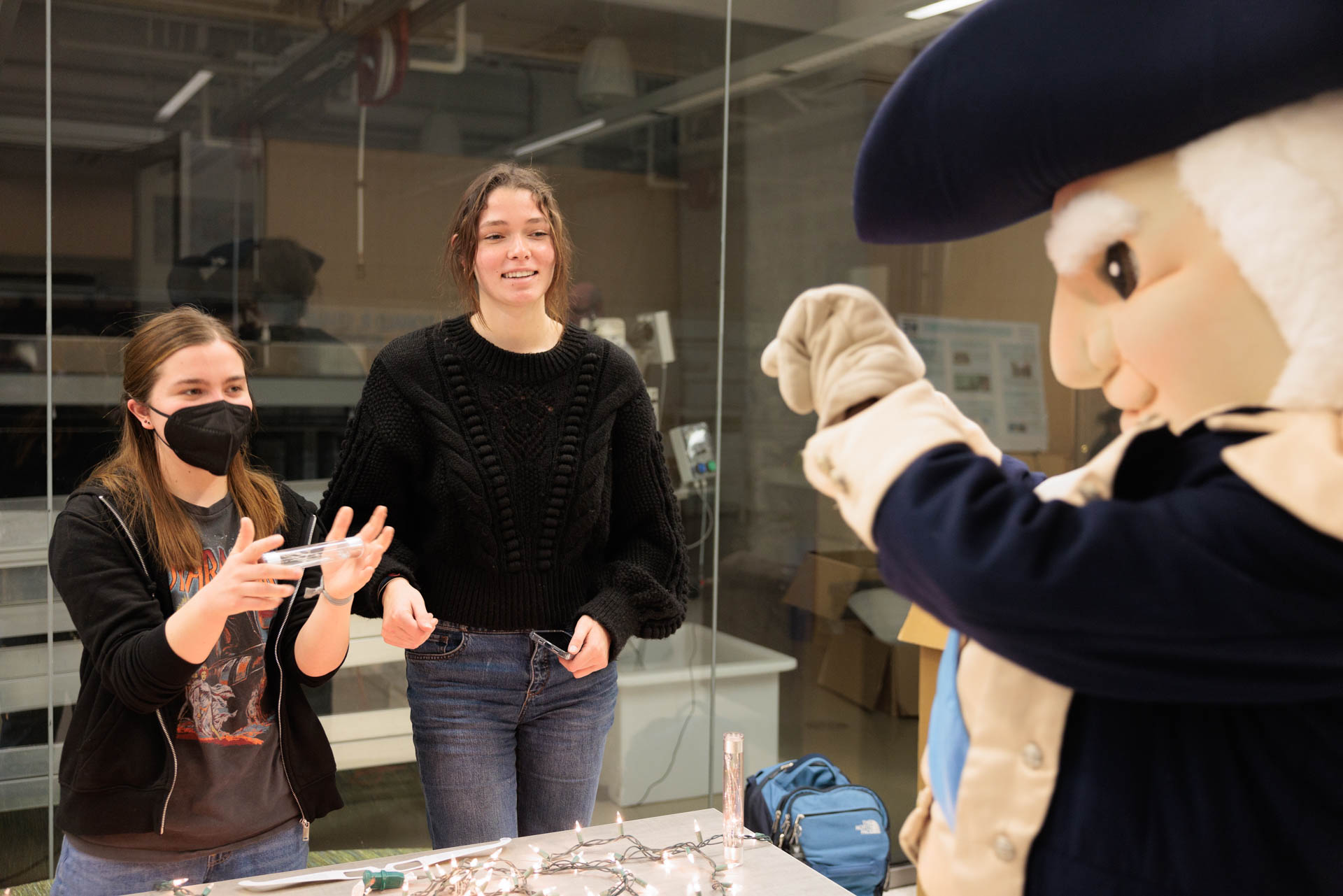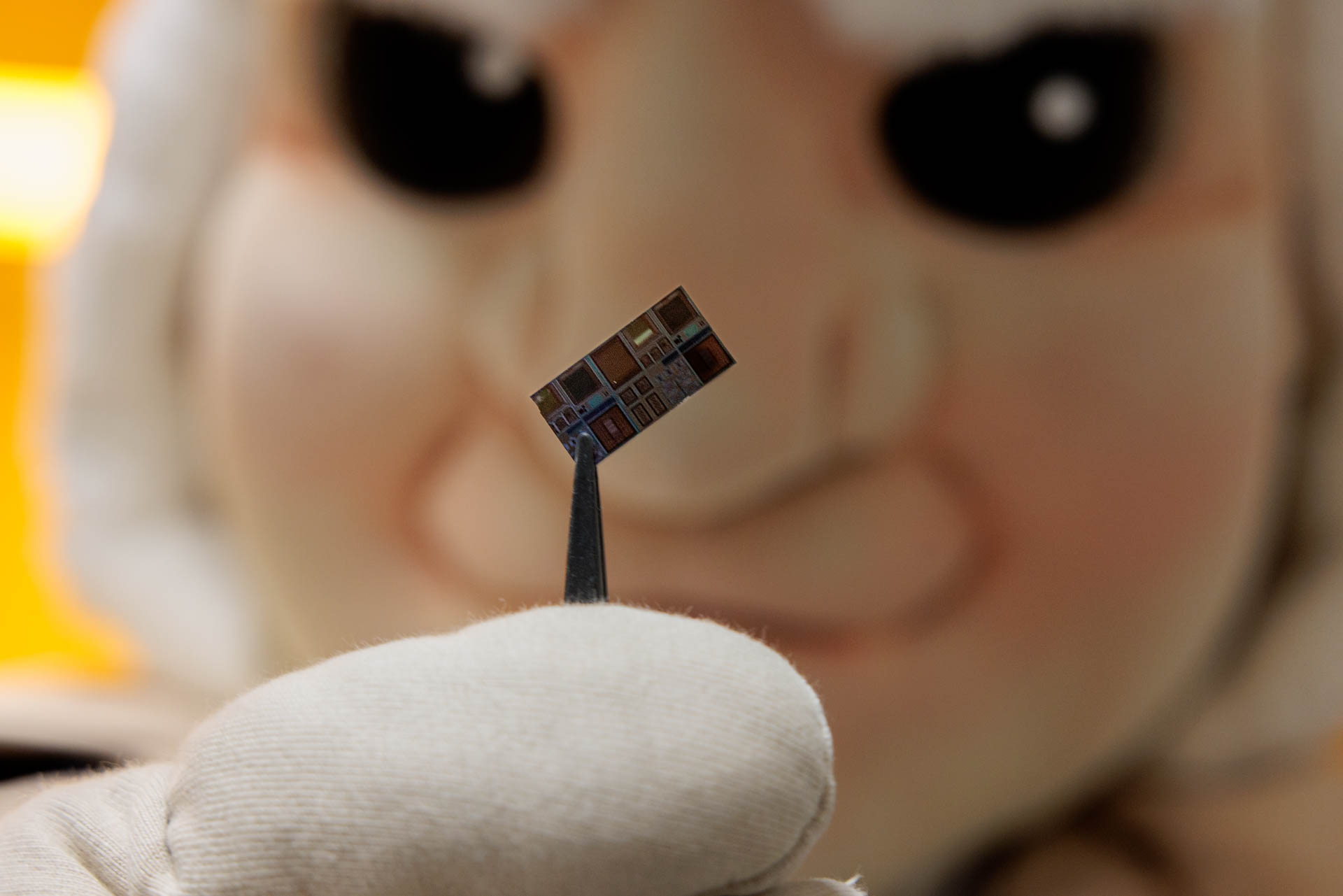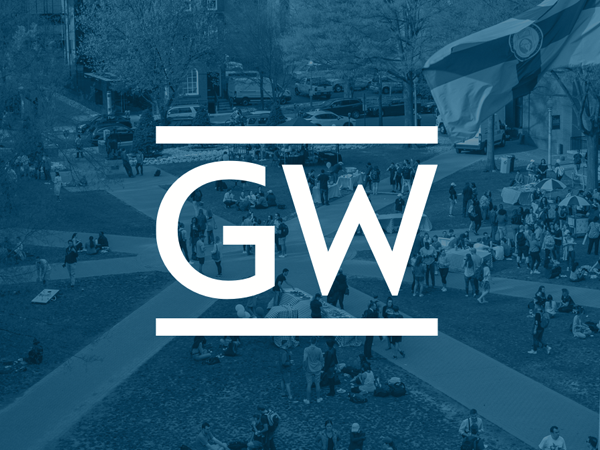Heather Hoffman, professor and vice chair of the Department of Biostatistics and Bioinformatics in the Milken Institute School of Public Health, said there is broad underrepresentation of women in science, technology, engineering and mathematics (STEM) fields. In working to change those numbers, Hoffman volunteers as a teacher at a robotics club at the elementary school her children attend.
“It is fascinating to me to see about 50-50 of the children enrolled are girls and boys,” she said. “It is exciting that girls know they can do it and amazing to watch their little minds grow and compare it to what our graduate students are doing now.”
Hoffman was among the attendees at an event held at the George Washington University’s Science and Engineering Hall in advance of the United Nations 8th annual International Day of Women and Girls in Science on Feb. 11. The event, which brought together women in science student groups across campus, kicked off a week-long celebration organized in partnership with the French, Italian and German embassies, and the Children’s National Research Institute (CNRI). Students from local high schools, including D.C.’s School Without Walls, also attended and mingled with GW’s vibrant community of female scientists and scholars.
GW Vice Provost for Research Pamela Norris said she was inspired to host the event following conversations with the science advisers at the three embassies and CNRI’s vice president for research. Together they welcomed the crowd at GW and talked about the importance of collaboration and diversity in the sciences.
“Seeing other women paving the way helps to counteract gender stereotypes which is crucial in both the recruitment and retention of women in science,” Norris, who is a mechanical engineer, said in her opening remarks. “I can attest that science is both a rewarding and a noble pursuit, not just for contributing knowledge for knowledge’s sake but because we have the opportunity to help solve some of the toughest, most complex societal and global challenges.”
Kersten Hildebrandt, B.S. ’09, M.S.H.S. ’10, CNRI’s vice president for research, described GW’s partnership in research, teaching and clinical care with the institution involving faculty, medical students, graduate students and researchers.
“We have a long history and are very connected with GW,” Hildebrandt said. “I am very excited to see all of you women take this space to celebrate achievement and inspire the new.”
Mireille Guyader, the French Embassy science and technology counselor, described a week of activities that include a screening at Children’s National of “Hidden Figures,” the story of three African American women working for NASA, followed by a panel discussion with young female scientists moderated by Norris. The German Embassy hosted a discussion with women scientists from France, Germany, Italy and the United States about their careers and difficulties they encountered as women. The week of activities culminated with a presentation by women entrepreneurs in science and technology at the French Embassy.
The program also served as the official launch of the Women in Science Diplomacy Club, which aims to strengthen diversity and gender equality in science diplomacy and policy, according to Evelina Santa-Kahle, who noted that she is the first woman to hold the position of science counselor at the German Embassy.
At the GW celebration, students, postdocs and faculty presented posters highlighting the various women in science student groups on campus and a sampling of their research. Hands-on activities included a virtual reality tour of the cosmos, building and racing bristle bots, extracting DNA from strawberries, and tours of GW’s state-of-the-art nanofabrication and imaging center.
Celebrating #WomenInScience at GW from The George Washington University on Vimeo.
Hui Wen, a Ph.D. student in the biostatistics and bioinformatics program, explained how she was drawn to science during a first-year class by a professor who used statistics to predict how students would perform on final exams by their midterm scores.
“I am the first college student from my family,” she said. “My goal when I was an undergrad and just came to the United States was to complete my bachelor’s degree and return home to teach. I am from the countryside. I never imagined that I would stay here at GW to do my Ph.D.”
Tess Carter and Kate O’Dell, post-doctoral researchers in environmental and occupational health, whose presentation described a day in the life of a scientist, said they were motivated by the desire to help people and benefit society. Though both were mentored by women scientists, they said, male professors have also become more encouraging.
“It’s nice to see that shifting, younger male professors being more supportive and thinking more critically about their own actions,” Carter said.
Emma Cummings, a sophomore at W. T. Woodson High School in Fairfax, Virginia, came to science almost naturally since her mother is a professor of mechanical engineering at George Mason University. She attended the session to learn more about different areas of science and spent time observing the nanotechnology display on making computer chips and taking a tour of the solar system and beyond.
“It’s a little intimidating,” she said. “Science is such a big broad term. There are so many things that can go into science, so it is unclear [to me] what science means.”
Ella Farida, president of the GW chapter of Alpha Omega Epsilon, a sorority that works to further the advancement of underrepresented genders in STEM, and Tiffany Chriss Mbeng, a junior pre-biology major and co-president of the Black Girl Pre Health Collective, want to support and encourage individuals they said may avoid science because they don’t see themselves enough in the profession.
Missy Cummings, Emma Cummings’ mother, said the GW Women in Science social was “fantastic” and that her own college experience would have been more positive had she been exposed to women scientists.
"It brings women together from different walks of STEM life at the college level and high school level so they can see the community,” she said. “That is so very important.”


